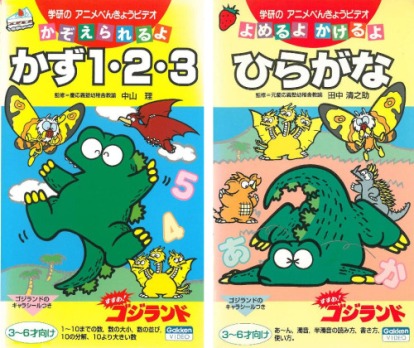We have just entered the seventh year of the 2010s, and so thus far, it has been a pretty flourishing and fruitful era for animated cinema. 2016 was a pretty solid year for animation, with films such as Zootropolis, Anomalisa, Your Name, Finding Dory, Kubo and the Two Strings and The Red Turtle paving the way for a hopefully equally strong 2017.
While most lists will be covering the usual Disney/Pixar/Dreamworks fare, I thought it would be good to compile a list of my 5 most anticipated animated films that are a bit off the beaten track. I hope you find out about some titles you weren’t previously aware of.
Lupin the Third: Chikemuri no Ishikawa Goemon (Goemon Ishikawa’s Spray of Blood)

Lupin the Third is one of the most iconic and influential franchises in the history of Japanese pop culture, debuting as a manga series in 1967 by Kazuhiko Katou, best known under his pseudonym, Monkey Punch. As the series has grown in popularity, it has had various anime adaptations, including 5 TV shows, 9 theatrical films, over 20 TV specials, some OVAs and even a few live action films for good measure.
The series is oft-considered an amalgamation of James Bond, Robin Hood, Ocean’s Eleven and Loony Tunes all rolled into one, focusing on a group of thieves, including dashing thief Lupin the Third, the sharpshooter Daisuke Jigen, the femme fatale Fujiko Mine, and the samurai Goemon Ishikawa XIII.
A stellar line up of directors have put their stamp on the franchise, showing different sides to the storylines and characters. These directors include Osamu Dezaki (Black Jack, Rose of Versailles) Masaaki Osumi (Moomin, La Seine no Hoshi), Gisaburo Sugii (Dororo, Street Fighter II: The Animated Movie), Shinichi Watanabe (Excel Saga, Nerima Daikon Brothers), Seijun Suzuki (Tokyo Drifter, Branded to Kill), and those two Ghibli legends, Hayao Miyazaki (Spirited Away, The Wind Rises) and Isao Takahata (Tale of Princess Kaguya, Grave of the Fireflies). The most recent director who has put his stamp on the series is Takeshi Koike (Redline, World Record), who directed the TV show, Lupin the Third: The Woman called Fujiko Mine (2012) and the movie, Jigen’s Gravestone (2014).
I have been a fan of Lupin the Third ever since I discovered it through The Castle of Cagliostro (1979), a wonderfully made adventure film that featured excellent animation, likeable characters, great action scenes and a brilliant soundtrack by Yuji Ohno (Captain Future, Space Adventure Cobra). In this film, he’s portrayed as a gentleman, whereas in most other depictions, such as The Mystery of Mamo (1978), he’s shown to be a bit of a cheeky playboy who has a funny haphazard quirkiness to him.
Takeshi Koike’s third project, produced by TMS Entertainment (Akira, Golgo 13) and subtitled Goemon Ishikawa’s Spray of Blood, and focuses on our titular samurai as he is branded as a traitor when he fails to prevent the assassination of the leader of a criminal syndicate for whom he was serving as a bodyguard, and is seeking revenge.
The goon targeting Goemon and the gang is “The Spectre of Bermuda”, known for a high body count. Judging from what I’ve read, it sounds like it will have a Chambara feel to it, with stylish sword play and over the top violence. The portrayal of Lupin and the gang this time seems a lot darker, being reminiscent of the Osumi episodes of the 1971 show, with more of a focus on the underground and violent nature of crime.
It was recently released in Japanese theatres on February 4th, 2017, with no word on an English release yet. I expect Discotek Media to release it, given the amount of support that has been shown through loads of DVD re-releases and sets for the franchise.
I’d recommend giving the series a try if you’re a fan of Cowboy Bebop or even James Bond. If you want to dip your toes in the series, a good starter point would be Castle of Cagliostro or the 1971 TV show, thanks to contribution by Hayao Miyazaki and Isao Takahata.
Mary and the Witches Flower
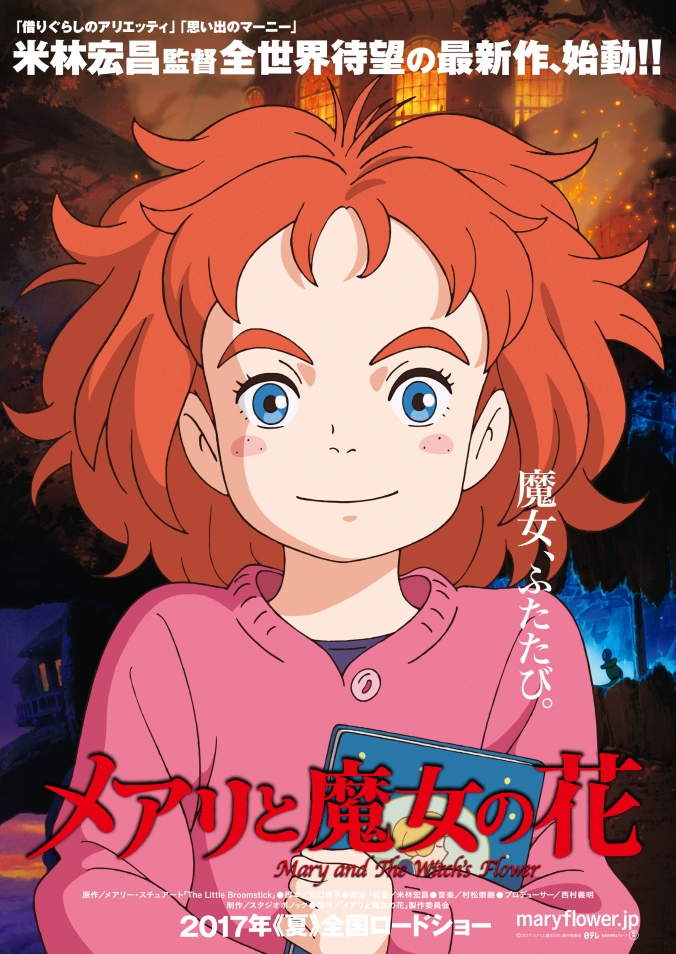
On August 3rd, 2014, after making 21 films, Studio Ghibli, perhaps the most internationally famous Japanese animation company of all time, announced that they were taking an indefinite hiatus from making feature films. This was after Hayao Miyazaki retired and their latest films receiving acclaim, but fairing very poorly at the box office. This move upset many fans, who now doubted if the spirit of Ghibli would live on.
In 2016, Ghibli worked on The Red Turtle, being the company’s first international collaboration, which ended up winning a few awards and receiving glowing praise, some of which came from Miyazaki-san. If you didn’t catch my review of this film, here’s the link to it.
On December 15th, 2016, fans were surprised and excited at the announcement of a new film Mary and the Witch’s Flower, from former Ghibli film director, Hiromasa Yonebayashi (Arrietty, When Marnie was There). Being produced by former Ghibli film producer Yoshiaki Nishimura (Howl’s Moving Castle, Ponyo), and based on British children’s book The Little Broomstick by Mary Stewart, it is being made at a brand new company made up of ex-Ghibli animators, Studio Ponoc, which is the Croatian word for midnight. Any fan of Ghbili’s catalogue of films should keep a close eye on this studio. Given that many companies are focusing on CG animation for ease of access, seeing Ponoc continue to keep hand-drawn animation alive is quite reassuring.
It follows a girl named Mary, who after being sent to her great aunt’s house, gains magical powers, but only for one night. This film looks like a mix of Kiki’s Delivery Service, Spirited Away and Howl’s Moving Castle, and it will be released in Japanese cinemas this summer.
Altitude Film Sales (Moonlight, Green Room) have secured the international distribution rights to Mary and the Witch’s Flower, and are intending to release it in cinemas this year.
Godzilla (2017)
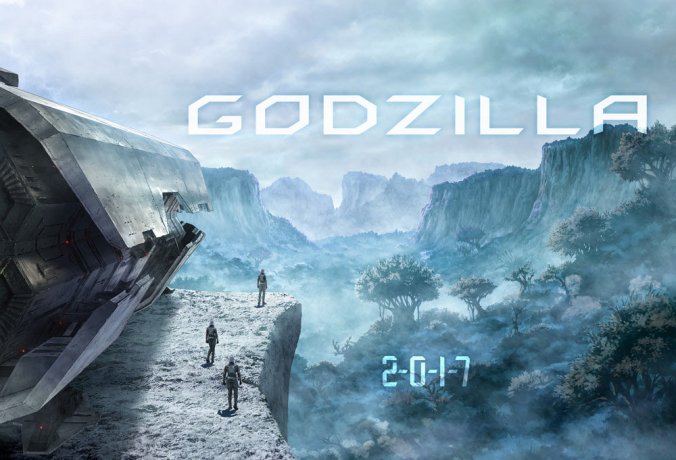
Godzilla is one of the most recognized and celebrated monsters in cinematic history, with the big G turning 63 years old this year. There have been 29 Japanese movies since 1954, with 2 American adaptations, cartoon shows and video games that have starred the atomic breathing beast.
With the success of the latest Japanese entry, Shin Godzilla, directed by Hideaki Anno (Gunbuster, Neon Genesis Evangelion) and Shinji Higuchi (Attack on Titan live action films), Toho have hired Polygon Pictures (Tron: Uprising, Ronia the Robber’s Daughter) to produce the first ever anime film instalment in the franchise. It only took the better part of 6 decades for this to eventually happen, given The King of the Monsters has had tons of homages and references in various shows, but the prospect is certainly exciting. It is worth mentioning however that Godzilla did previous have an anime excursion in the form of the educational OVA series, Godzilland (1994-1996).
(I have a feeling he won’t look this cute in the new version.)
Godzilla (2017) will be directed by Kobun Shizuno (Knights of Sidonia, Soul Buster) and Hiroyuki Seshita (Ajin, BLAME! The Movie), with the screenplay being overseen by acclaimed writer Gen Urobuchi (Puella Magi Madoka Magica, Thunderbolt Fantasy). Not much about the film has been shown, outside of some concept art, but it certainly seems promising, with futuristic spaceships, primordial forests and space exploration to hopefully be present in the plot. Only thing I’m hoping is that the human characters are hand-drawn, as CG in anime always tends to be low frame rate and look a bit uncanny and off-kiltler for my liking.
Godzilla (2017) hasn’t been licensed for a Western release yet, though given the crew behind it, I’m sure it’ll get licensed.
The Breadwinner
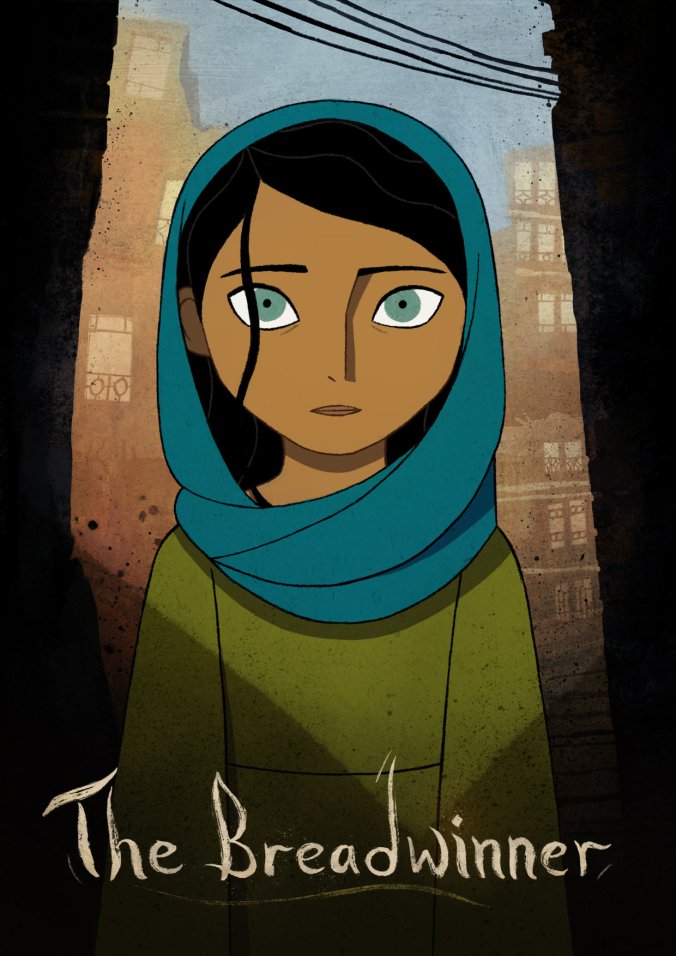
Cartoon Saloon is a relatively new studio, formed in 1999 and are based in Kilkenny, Ireland. They have released films such as The Secret of Kells (2009) and Song of the Sea (2014), both of which are based on Irish folklore, and have received acclaim for stunning animation, touching storylines and having an imaginative flair that is quite refreshing. They are certainly positioning themselves to be a studio to look out for in the future.
Their newest outing, The Breadwinner is based on a 2001 children’s book by Deborah Ellis, and is directed by Cartoon Saloon’s own Nora Twomey, co-produced by Tomm Moore and would you believe it, Angelina Jolie. The story is based on Ellis’ own conversations with Afghan children in refugee camps, and tells the tale of Parvana, a young Afghan girl who must protend to be a boy in order to help her family survive.
It promises to be both enlightening and touching, and if Cartoon Saloon’s previous efforts are anything to go by, the visuals will be subtle and stunningly presented. It will be released sometime later this year and distribution will be handled by GKIDS in America, and StudioCanal in Europe.
Night is Short, Walk on Girl & Lu over the Wall
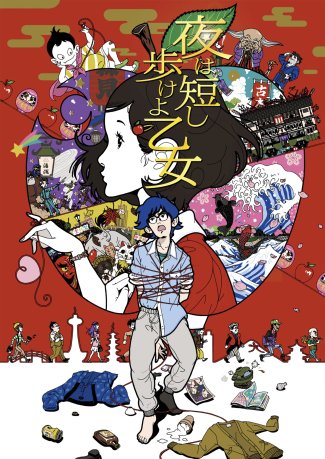
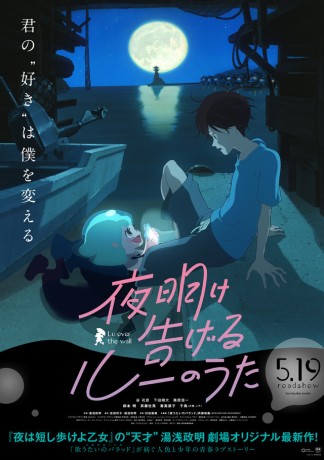
OK, so I’m cheating a bit here, but I really wanted to talk about both of these new films from one of my most respected anime directors, Masaaki Yuasa (Mind Game, Ping Pong: The Animation). I do hope you understand.
First of all, I’ll talk about Yuasa’s new collaboration with Tomihiko Morimi, Night is Short, Walk on Girl. Yuasa previously adapted Morimi’s novel, The Tatami Galaxy, a psychological dark comedy that was acclaimed for sharp humour, thought provoking dialogue and quirky characters. Night is Short, Walk on Girl takes place in Kyoto, and follows a misguided romance between a black-haired girl and her admirer, and promises to be a surreal, psychedelic and unique story, including side characters like the Underpants Leader, the God of the Old Books Market, and someone who proclaims to be the mythical creature, Tengu.
The character designs are beautifully handled by Yuusuke Nakamura (Tatami Galaxy), with a soundtrack by Michiru Oshima (Full Metal Alchemist, Ico) and will be animated by Yuasa’s own studio, Science SARU (Space Dandy, Garo the Animation).
Night is Short, Walk on Girl will be released in Japanese cinemas on April 7th, with no English release date as of yet. Here’s hoping it gets picked up for an international release.
The second film, Lu over the Wall, also produced by Science SARU, is an original script penned by Yuasa, and as such, is his first original feature length film, with character designs by manga artist Yoko Nemu (Pandora, Gozen 3-ji), music by Takatsugu Muramatsu (When Marnie was There, Hime Chen!) and art direction handled by Kouji Oono (Wolf Children, Usagi Drop).
The story focuses on a middle school student named Kai, who lives in a countryside harbour whose life changes when he meets a mermaid named Lu, slowly forming a bond which allows him to grow and slowly open up about his feelings. The story sounds like a cross between The Girl Who Leapt Through Time, Your Name and Ponyo with Yuasa’s fantastical and quirky animation style for good measure.
Lu over the Wall will be released in Japanese cinemas on May 19th, a month after Night is Short, Walk on Girl. No one as of yet as licensed this film for a Western release, but hopefully it’ll be released in the West sooner than later.
